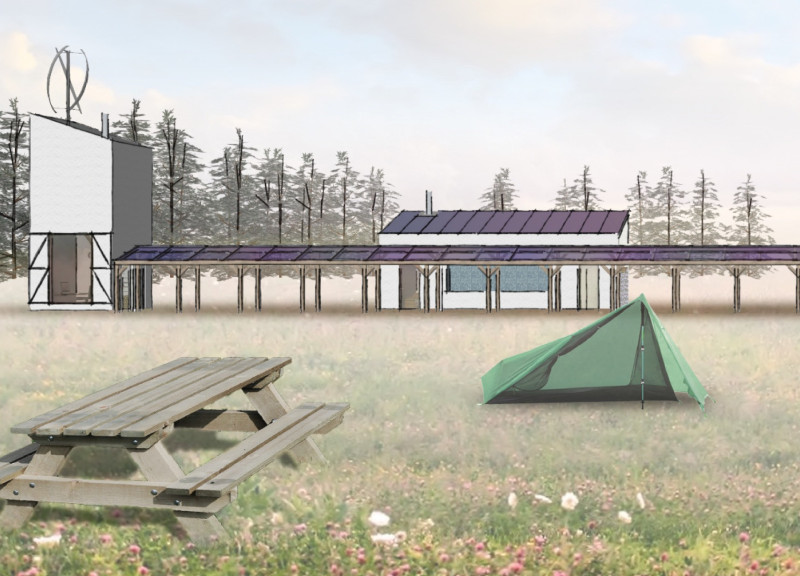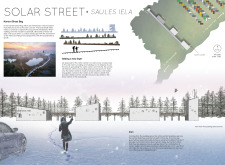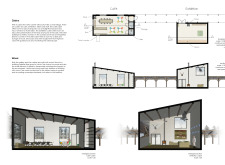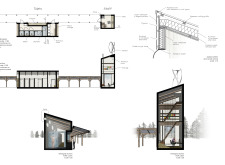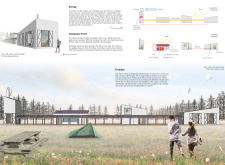5 key facts about this project
The visitor center at Kemeri Great Bog is designed to connect people with the natural environment of the area. Located in a region known for its unique moorland, the center provides various functions such as a café, exhibition space, and visitor services. The overall design approach involves spreading several smaller cabins across the site rather than relying on a single structure, which allows for better interaction with the landscape.
Design Layout
The layout of the center includes essential components such as a staff area, toilets, parking, and a ticket counter. This arrangement encourages community engagement and exploration, similar to a small village. A long gallery links these individual cabins, offering shelter while mirroring the path of the nearby boardwalk that guides visitors through the bog.
Visual Characteristics
The visitor center showcases polycarbonate domes that function as windows, allowing light to enter while creating a visual connection with the landscape outside. These features are not only practical but also highlight the center's proximity to the unique ecological surroundings. The bright interiors enhance the overall experience for visitors and maintain a close relationship with nature.
Material Use and Sustainability
Local wood serves as the primary construction material, reflecting traditional building practices in Latvia and reducing environmental impacts. This decision aligns with a commitment to sustainability, as the center operates entirely off the grid. Solar panels and a vertical wind turbine are used to meet energy needs. The roof of one cabin collects solar energy for water heating, ensuring that the facility is resource-efficient.
Security Features
To address the risk of vandalism and enhance safety, the design includes foldable shutters. This choice limits the amount of glass used in the structure, balancing security with functionality. These protective measures contribute to the durability of the center, allowing it to remain a reliable resource in the Kemeri Great Bog.
The emphasis on passive solar design is evident throughout the building, with well-placed south-facing windows that help in capturing and retaining solar heat. This natural heating method supports energy efficiency and creates a comfortable environment inside the visitor center.


